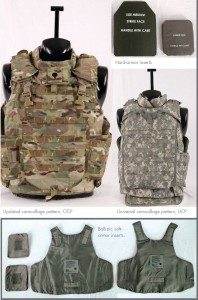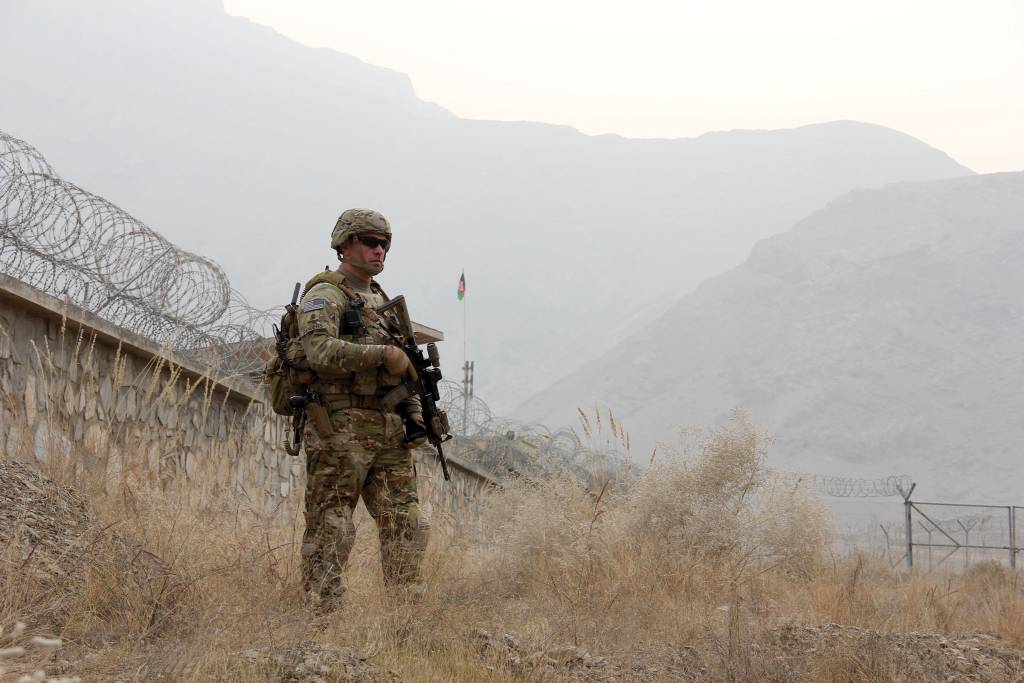It is not every day you can get half of the latest and greatest product in any industry, but that is exactly what a team from the product manager for Soldier Protective Equipment, or PdM SPE, and Defense Logistics Agency Troop Support, or DLA-TS, has done.
Their efforts are now culminating in the first deliveries of more than 148,000 Generation III Improved Outer Tactical Vest, or Gen III IOTV, body armor conversion kits, acquired at approximately half the cost of procuring new systems – $791 versus $413.
Best practices from government and industry, Soldier feedback, and creative thinking allowed PdM SPE, assigned to the Program Executive Office, or PEO, for Soldier, and DLA-TS to chart a path to upgrade older versions of the IOTV at half the cost of new Gen IIIs.
The team of product engineers, quality assurance representatives, logistics support experts and contracting personnel developed a plan with the potential to save more than $150 million while providing Soldiers with the best possible system. Current contracts have already saved U.S. taxpayers $56 million.
A decade ago, as the nation waged war on multiple fronts throughout the globe, defense spending rose, and the Army acquired 1.7 million IOTVs, beginning in 2007. Many of those IOTVs are older models that lack Soldier-driven improvements and may not be as effective in combat as the upgraded version.
Nearly 400,000 of the older IOTVs manufactured in the Universal Camouflage Pattern, or UCP, remain in inventory and need to be replaced with the Operational Camouflage Pattern, or OCP. With defense funding on a decline, this is a much different acquisition environment from two years ago, and that was the spur for this effort.

In 2014, the team took advantage of smart decisions made during IOTV improvements to formulate a strategy that would deal with tighter budgets, an aging IOTV inventory and concerns about the combat-effectiveness of older IOTVs.
Continuous Soldier feedback spurred the creation of three different generations of the IOTV.
Gen I came in five sizes and included a threaded cable quick-release system. This allowed rapid removal of the IOTV if a Soldier fell in water or required first aid. Gen II came in 11 sizes in response to Soldier feedback and included greater adjustability and other incremental improvements, such as in the quick-release system and soft-armor inserts. Gen III eliminated hook-and-loop closures and added a faster, more intuitive quick-release system.
Two factors characterized each IOTV iteration: each brought significant enhancements to the warfighter, and the improvements did not change the size or shape of the ballistic materials used in the vests, which usually accounts for more than half the cost of a new vest. This consistency in the ballistic materials meant that each generation did not add new items to the supply inventory.
Doing so would have made thousands of systems obsolete and made logistics more difficult. But by making the hard-armor plates and soft-armor ballistic inserts compatible with newer IOTV designs, the PdM SPE and DLA-TS team could use existing stocks of these components.
HOW OLD IS TOO OLD?
If the team were to take advantage of existing stocks of soft-armor inserts, it needed to determine if those already in inventory or in Soldiers’ hands would be usable in new systems. That meant determining how long aramid-fiber, soft-armor ballistic packages really last. Industry provides a standard five-year warranty, but PdM SPE and DLA-TS had anecdotal evidence that soft-armor, ballistic packages had longer shelf lives.
Armed with a ballistic surveillance effort test plan, PdM SPE pulled IOTV samples from multiple central issue facilities, or CIFs, throughout the United States, representing the different climatic environments in which the IOTVs are stored.
The team subjected the samples – some dating back to 2007 – to the same rigorous ballistic and fragmentation standards as when the Army originally accepted them. Results from the first round of testing showed the soft-armor ballistic inserts performed to standard. With these results, the team raised the estimated shelf life from five to seven years.
Subsequently, the team conducted a second round to test even older soft-armor ballistic inserts – those with service entry dates as early as 2000, also from multiple CIFs throughout the country – to see if they continued to maintain full serviceability. The team expects results from this second round of ballistic and fragmentation tests, conducted at Aberdeen Test Center, Maryland, to be available in late summer 2015. The tests conceivably could show that these inserts remain effective for up to 15 years.
KIT DEVELOPMENT
With scientific proof of longer service lives for soft-armor ballistic inserts, the team used the consistent size and shape of the inserts to develop the Gen III IOTV Conversion Kit, which uses existing quantities of soft-armor inserts rather than buying new complete IOTV systems. This strategy allowed continuous refreshment of technology through procurement. Instead of having DLA sustain the IOTV by procuring Gen II IOTVs in UCP, the agency will modernize at the same time as it sustains by procuring the Gen III Conversion Kits.
The IOTV Conversion Kit takes the soft-armor, ballistic inserts from existing IOTV inventories and places them into a new carrier, creating the latest-generation vest. A Gen III IOTV ordered from DLA costs $791 per system, but the average unit cost of a Gen III Conversion Kit is $413.
The benefits of the conversion kit are threefold:
- Resets the shelf life of the IOTV system for up to another seven years by replacing the outer carrier and components that wear out first.
- Offers all of the benefits of the latest generation of the IOTV, particularly the significantly enhanced quick-release system.
- Provides an opportunity to change the camouflage pattern used on the IOTVs from UCP to OCP.
In an example of close cooperation between PEO Soldier and DLA-TS, procurement of the first quantities of the Gen III IOTV Conversion Kit occurred before transitioning to sustainment. Today, all active IOTV contracts are now modified for either the Gen III IOTV Conversion Kit or the Gen III IOTV complete system. This offers the ability to procure conversion kits to upgrade more than 400,000 Gen I and II IOTVs, as well as the UCP IOTVs currently in inventory.
With a cost savings of $56 million during the recent procurement of conversion kits and the potential to realize more than $150 million in savings if the entire inventory is converted, the government is providing the best possible system in a fiscally responsible manner – an achievement that resulted directly from effective and continuous coordination between DLA-TS and PEO Soldier.
The legacy of this effort will be measured in the increased capability provided to the Soldier. The conversion kits deliver the best capability, at the right time and in the right camouflage pattern to protect the U.S. Soldier.










